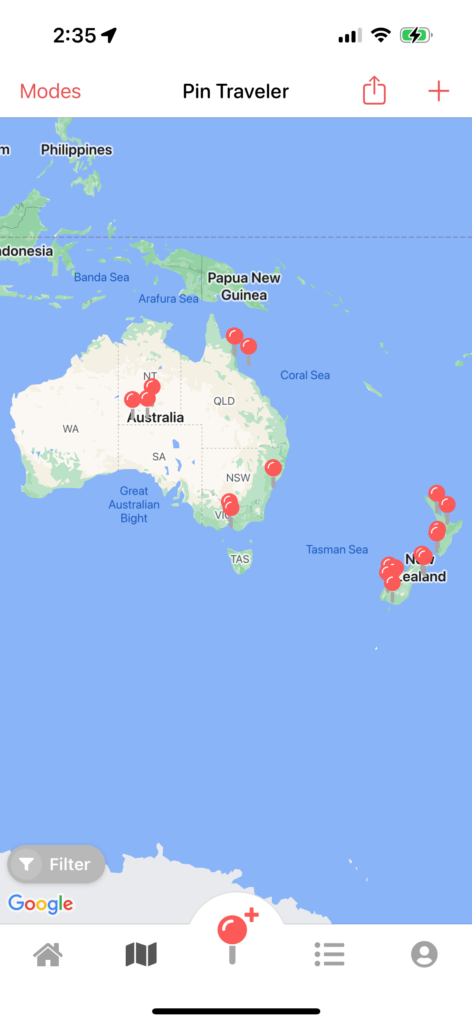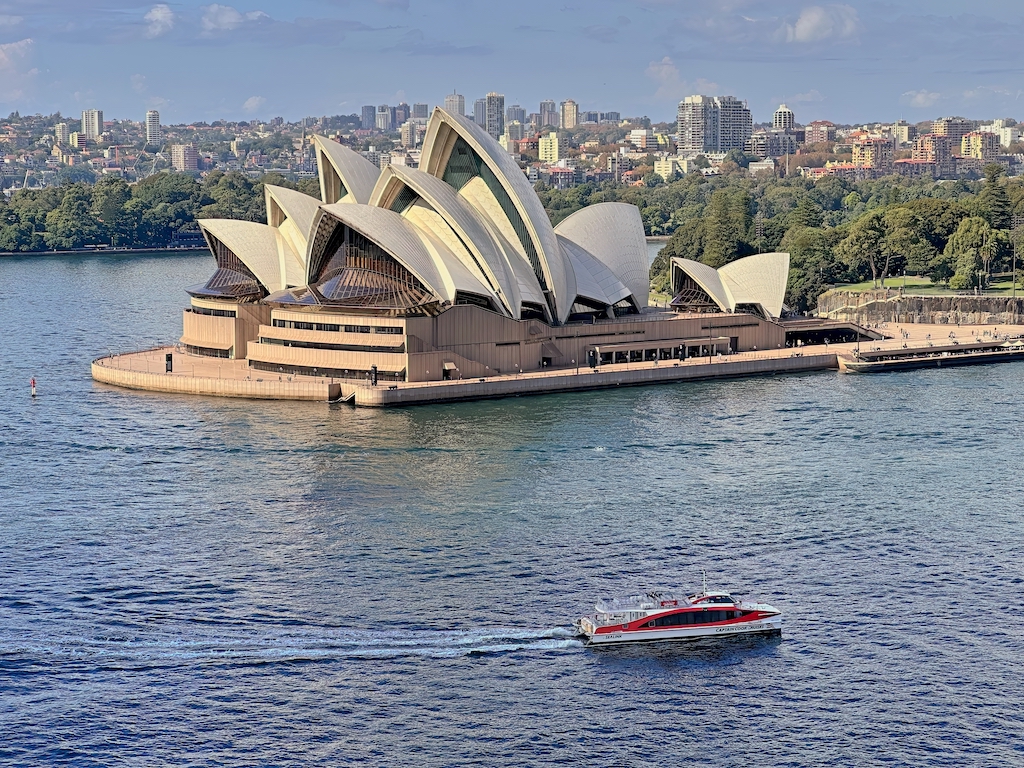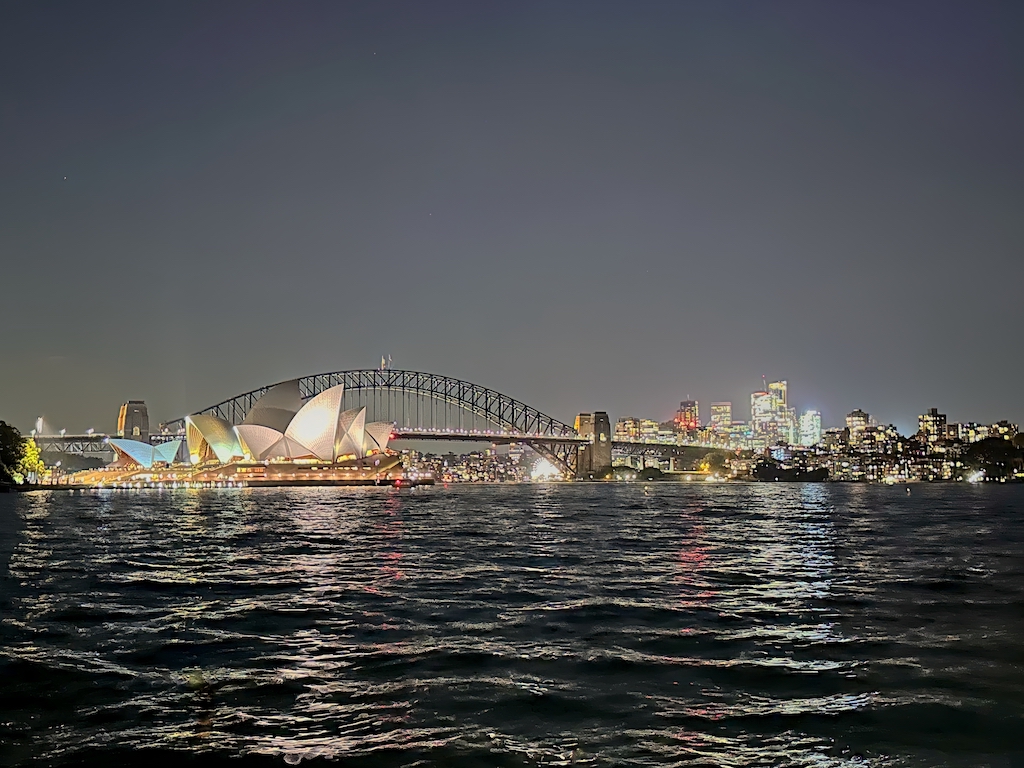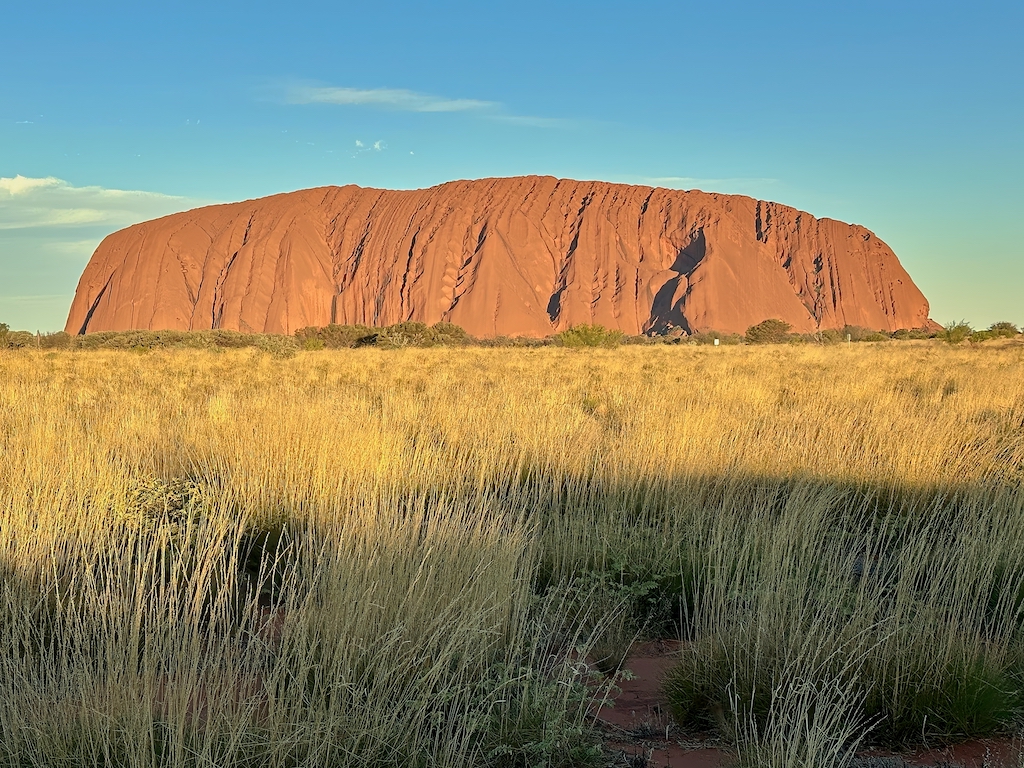“The journey is the reward,” it’s been said. A sentiment to which I heartily agree.
In April, 2024, I took the longest trip in terms of duration that I’ve taken since I was in college. It could also have been the longest trip in terms of miles too, but I’m not going to attempt to measure. I’ve been fortunate in that I’ve been able to travel where I’ve wanted to go, and usually when I’ve wanted. Now that I’m retired, this is truer than ever.
My recent trip lasted four weeks and took me to the lands Down Under: New Zealand and Australia. If there is one negative thing to say about the trip it would be that it wasn’t long enough! I made good use of the Pin Traveler app, and learned how to deal with its quirks and design issues early on. I created a trip in the app and then logged each (major) stop. This is a screen shot of the trip as shown in the app:
There are quite a few “pins” on this map! I counted 21 stops in 28 days. It was quite a journey. Well worth the 24 hours flying time it took to get there (28 to return!).
For the second time in as many trips, I opted to leave my Nikon camera at home and to use my iPhone 14 Pro as my only camera. It was not an easy choice to make, but in my opinion, the camera capabilities of Apple’s smartphones are good for all but the most demanding professional. I’m not yet ready to forego my DSLR yet, but I’m happy with a number of the photos I took with the phone, so even though a part of me regrets not taking the larger camera, I don’t think I missed getting any shot I wanted to take.
And since taking a “grab shot” with a phone is easier than with a camera slung around one’s neck as one is navigating a rain forest trail or trekking along with a group among city streets, maybe there’s a photo or two I couldn’t have taken otherwise. We’ll never know.
What makes this whole topic even easier is the current level of astounding technology in the photo editing field. I’m a bit of a software junkie, so I have purchased subscriptions to what I consider to be the three top photo editing programs available today: Adobe Photoshop/Lightroom, ON1 Photo RAW 2024, and Luminar NEO. I wish I could say that one stands head and shoulders above the rest, but this is a red-hot, highly competitive market right now, and each is attempting to outdo the others with features and capabilities. AI (artificial intelligence, in case you’ve been in a coma for the past decade or so) has found its way into photo editing software and the results are quite remarkable!
Having been in the tech field for the bulk of my career, I have no illusions as to what it is, what it can (or can’t) do, and I don’t fear it becoming self-aware like the HAL 9000 computer in 2001: A Space Odyssey.
After settling in from my trip, I downloaded the photos I took from my phone to my computer and decided to see what I could do with my recently updated apps. Since ON1 had just released a major update, I thought I would give it a try. I was impressed! With just three or four clicks using the built-in AI, I was able to add vibrance and clarity to photos that were otherwise drab and uninteresting. To accomplish this earlier would have meant making many changes and adjustments. Since I’m not prepared to go into a major before-and-after comparison, let me just say that this software is making it much easier to achieve standout photos than before. Of course, there is always the down side: To say that “Photographs don’t lie” is now a false statement. Photos can most certainly lie. That they’ve been able to do this for decades isn’t the issue. That now almost anyone can make a photo into something it isn’t or wasn’t is.
Well, no article about photography, editing or AI would be complete without some examples, would it? So, here I present some finished photos from my recent trip. All taken with my iPhone.
I’m still editing photos — both from this trip and others. Now that I’m retired, I can take as much time to render passable images as I please. I may even post some of them here!




